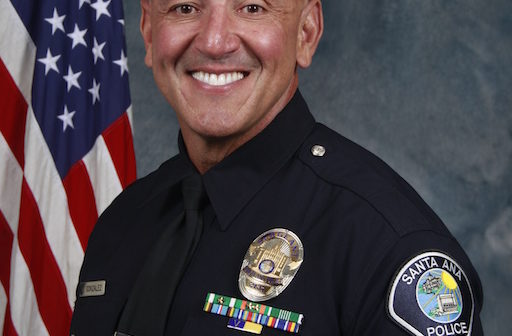Sgt. Mike Gonzalez of the Santa Ana Police Department was in Henderson, Nev. on Friday and Saturday, teaching a Tactical Emergency Casualty Care (TECC) class to a group of white- collar workers.
In the workshop, Gonzalez teaches life-saving basics such as performing CPR and stopping bleeding before first responders arrive in active-shooter scenarios.
He didn’t know it yet, but the 24-year veteran of the SAPD, a Navy combat veteran with extensive training in treating trauma victims, was on the verge of applying his TECC lessons in real life, during the deadliest mass shooting in U.S. history.
After teaching the workshop Friday and Saturday, Gonzalez drove to nearby Las Vegas on Sunday, Oct. 1, to take in the final day of the Route 91 Harvest Country Music Festival and “chill and eat like a king.”
Said Gonzalez: “That was the plan.”
Plans changed.
Gonzalez was in the back of the venue and among the 22,000 concertgoers jamming to Jason Aldean on stage when the first round of gunfire rang out.
“It’s familiar, but you can’t tell what it is,” Gonzalez said.
The second torrent of shots filled the air.
“I said, ‘That’s gunfire,’” he said.
By the third round of shots, it was chaos.
Gonzalez switched into his default mode as a first responder.
He saw the muzzle flashes coming from a window on a high floor of the Mandalay Bay across the street.
“If I can see the gunfire, the gunfire can see me,” Gonzalez said.
He helped, and in many cases, carried distraught and wounded concertgoers behind a pillar, where they would be protected from gunfire.
“Lay down and just stay here,” he shouted at them.
He carried injured concertgoers to the exit on the west side of the venue, the opposite side from the Mandalay Bay.
At the exit, Gonzalez partnered up with an off-duty LAPD officer.
“I’m going back in,” Gonzalez said. “He says, ‘I’m going with you.’”
The pair entered a medical tent, where they saw victims of gunshots and life-threatening injuries waiting to be treated by an overwhelmed and undermanned staff of workers.
“There were too many injured for the three or four medics that were there,” Gonzalez said. “Everybody was doing what they could.”
He noticed a woman who appeared to have been shot through the mouth and was having difficulty breathing.
Gonzalez put his hand into her mouth and cleared away the blockage.
He bent her over.
She began taking breaths.
Gonzalez saw another young guy with a wound to his abdomen.
“What’s your name?” he asked.
“’Arthur.’”
“I go, ‘Arthur! You are going to live, dude! You are going to live!’” Gonzalez said.
He noticed a man plugging his own gunshot wound with his hand.
He performed CPR on a young woman.
“I never experienced anything like this, ever,” he said. “People sitting there with gunshot wounds that I couldn’t get to.”
They ran out of tourniquets in the medical tent, so they cut slivers of sheets to be used instead.
In one instance, the LAPD officer with him used a stethoscope as a tourniquet for a wounded woman.
“We would go outside and find newly injured or people just standing there,” Gonzalez said. “The (LAPD) officer found people hiding in the bushes and linked them up with people too scared to move. He had them share names and then moved them out of the venue together.”
About 30 minutes into the frenzy, Gonzalez and the LAPD officer headed to the street on the west end of the venue.
“There were people lying in the streets with gunshot wounds,” he said. “People came up asking what they could do, so we used them to load the injured into trucks and cars.”
They flagged down drivers and helped the wounded into cars.
“We stayed inside the venue for about an hour once bodies stopped being dropped off at our location, and (when) the last of the living was out, we left,” Gonzalez said. “A lot of people helped out. It was amazing.”
The number of casualties was staggering — 58 dead and more than 500 injured.
Gonzalez figures he tended to 11 injured concertgoers and helped another 15 or so into vehicles for transport to the hospital.
He returned to California on Monday, Oct. 2.
To decompress, Gonzalez has been paddle-boarding in solitude.
He’s also shared his experience with media and colleagues.
“Telling the story helps,” he said.
 Behind the Badge
Behind the Badge




